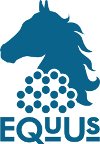A Short Course on Topological Insulators: Band-structure topology and edge states in one and two dimensions
Authors: J. K. Asbóth, L. Oroszlány, A. Pályi
These lecture notes provide an introduction to some of the main concepts of topological insulators, a branch of solid state physics that is developing at a fast pace. They are based on a one-semester course for MSc and PhD students at the Eötvös University, Budapest, which the authors have been giving since 2012.
Our aim is to provide an understanding of the core topics of topological insulators – edge states, bulk topological invariants, bulk–boundary correspondence – with as simple mathematical tools as possible. We restricted our attention to one- and twodimensional band insulators. We use noninteracting lattice models of topological insulators, and build these up gradually to arrive from the simplest one-dimensional case (the Su-Schrieffer-Heeger model for polyacetylene) to two-dimensional timereversal invariant topological insulators (the Bernevig-Hughes-Zhang model for HgTe). In each case we introduce the model first, discuss its properties, and then generalize. The prerequisite for the reader is quantum mechanics and not much else: solid state physics background is provided as we go along. Since this is an introduction, rather than a broad overview, we try to be selfcontained and give citations to the current literature only where it is absolutely necessary. For a broad overview, including pointers to the original papers and current topics, we refer the reader to review articles and books in the Introduction.
Supporting material for these lecture notes in the form of ipython notebooks will be made available online.
Despite our efforts, the book inevitably contains typos, errors, and less comprehensible explanations. We would appreciate if you could inform us of any of those; please send your comments to janos.asboth@wigner.mta.hu.
Acknowledgments. We are grateful for enlightening discussions on topoological insulators with Anton Akhmerov, Andrea Alberti, Carlo Beenakker, and Alberto Cortijo. We thank the feedback we got from participants at the courses at Eötvös University, especially Vilmos Kocsis. A version of this course was given by one of us (J.K.A.) in the PhD programme of the University of Geneva, on invitation by Markus Büttiker, which helped shape the course.
Online version is available here: http://arxiv.org/abs/1509.02295
- Log in to post comments

Recent comments